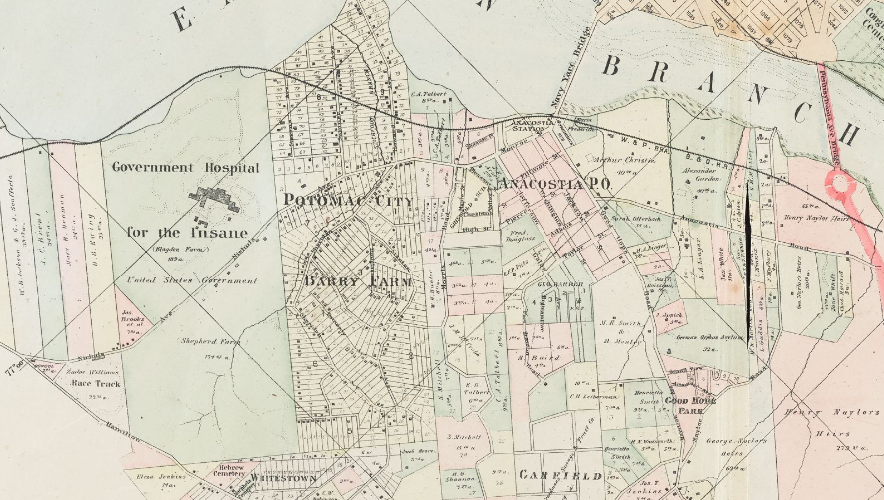
In 1867, the federal government purchased a 375-acre site in Anacostia, later known as Hillsdale, and as Barry’s or Barry Farm (more recently as Barry Farms) for the settlement of African Americans after the Civil War. The isolated community was self-contained by design, requiring residents not only to demand the installation of basic utilities, but to lead the way in building schools, churches, and civic organizations. Founded the same year that African American men gained the vote in D.C., Barry Farm and the surrounding area were the home base of an emergent black political class, including Frederick Douglass.
Barry Farm takes its name from an estate once owned by Washington City merchant and councilman James Barry, who had purchased this section of the “St. Elizabeths” tract in hopes of profiting as the city expanded eastward. However, the tract remained isolated from the rest of city in 1867, when the federal Bureau of Refugees, Freedmen, and Abandoned Lands (known as the Freedmen’s Bureau) began searching for sites to house the 40,000 refugees from slavery who had arrived in D.C. during the Civil War (1861-1865). After white resistance prevented the Bureau from purchasing land west of the Anacostia near the Navy Yard, officials secretly negotiated to buy 375 acres from Barry’s heirs. The site was hilly, densely forested and filled with underbrush.
By October 1868, most of Barry Farm’s 375 one-acre lots were already sold, along with enough lumber and supplies for each family to build a two-room house. Within two years of its establishment, 266 families had moved to the site. Many of the residents held "day jobs" and would work on their homes in the evening and at night, after coming home after a full day's work.
The map on the following page is of Barry Farm from 1867. It shows the "St. Elizabeth" district, or Barry Farm with plot divisions and the names of the plot owners on the plots. As I carefully inspected this map, I came across a name that I was already familiar with because of the reseach I had done on the Flemonses family name. The name I came across was Abner Flemming. There it was! My great-great-grandfather. See the map on the next page.
previous
next
Page 1


